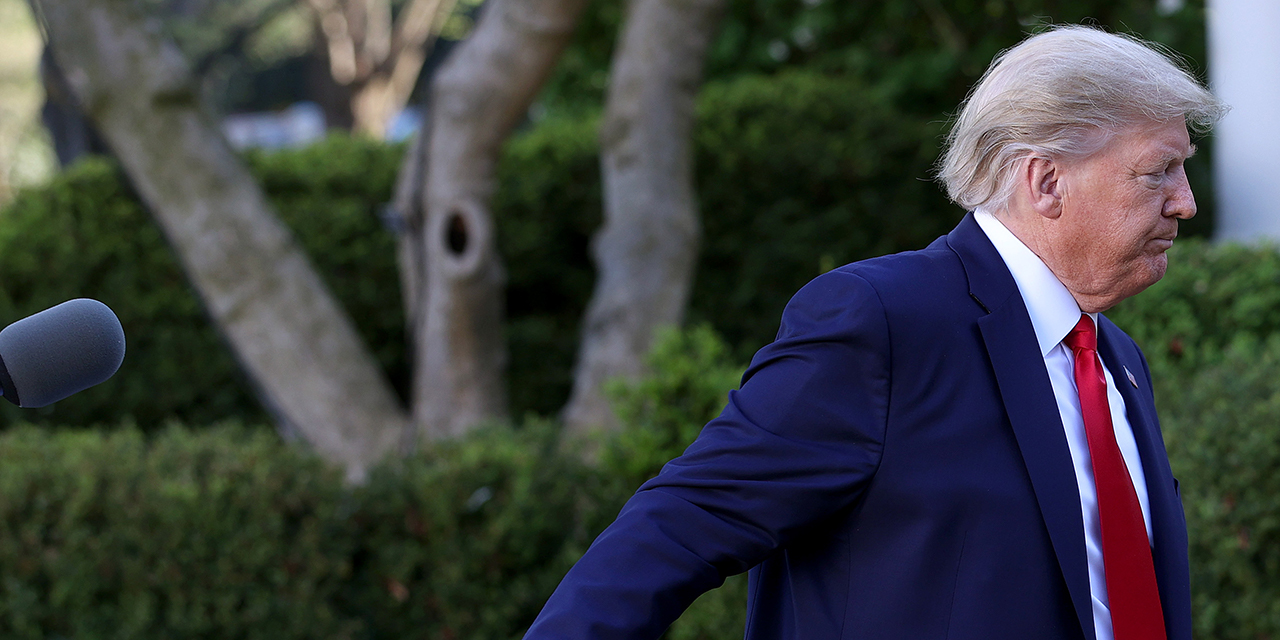We’re already on pins and needles. Official disunity makes it worse.
You can be certain that some variant of the conversation below took place Saturday morning in tens of millions of households in the Northeast, including mine.
“Did you hear what the president just said?”
“No. What?”
“He might quarantine New York, New Jersey and Connecticut to stop spread of the virus. He said it would take effect ‘sometime today’ and last two weeks. He’ll let us know his final decision later.”
“He’ll let us know . . . later? Are you serious? What would it even mean? That we couldn’t leave the state? That we couldn’t leave our homes?”
“I don’t know. He didn’t get into details. He made the announcement in front of some reporters and then got on a helicopter.”
“And how would he enforce it? You’re talking about limiting the movement of 20 million people. Would he impose martial law? Can he do that?”
“I don’t know. He didn’t say.”
“Wait. Someone just asked Gov. Cuomo about it. Cuomo says he talked to Trump earlier about getting more medical supplies to New York but not about any quarantine. The topic didn’t come up.”
“Hold on. You mean, the president didn’t say anything about this to the governors beforehand? This is crazy.”
“Should we do something, prepare somehow, just in case? Maybe we should try and leave before we’re stuck here . . .”
Eight hours after President Trump made his off-the-cuff remarks about an “enforced” quarantine for the region, he walked them back. But the episode is illustrative nonetheless. Millions of responsible citizens all over the country are trying to do the right thing. They are “social distancing” and not buying up all the toilet paper at the supermarket. They are homeschooling their children while trying to get some work done themselves, provided they are still employed. They have been holed up at home, waiting patiently for public officials to explain what exactly is going on and when the situation will improve.
Several weeks in, we are still waiting. We see long lines outside emergency rooms and Costco stores. Refrigerated tractor-trailers are being used to store corpses in New York City. And people are growing more anxious by the day at what we hear from those who are tasked with guiding us through this ordeal. At a time when it has never been easier to communicate with the public, and perhaps never more important to do so, the people in charge of addressing the coronavirus crisis seem incapable of speaking with anything close to a united voice.
People want to feel safe. They expect those in charge to be competent and working in unison, even in an election year. And they want to know how to tell when we’ve turned a corner. Will it be a decline in the infection rate? The hospitalization rate? The mortality rate? Is the goal to ramp up the diagnostic testing as quickly as possible, isolate those who are infected, and allow the others to get on with their lives? Why can’t our public officials—with a few exceptions—spell out these answers with any clarity or consistency?
How tough can it be for the politicians and their public health advisers to get on the same page before sounding off on, say, the promise and efficacy of repurposing antimalarial drugs to fight the pandemic? Others will have their own opinions, and there will be critics no matter what decision is made. But is it too much to ask that the administration make some attempt to speak with one voice? Can’t the president and the governors consult on major announcements in private before they go public in a manner that sends residents of three states into a panic? And must officials lay bare their differences each evening on cable news?
We can’t even get a straight answer from the government on whether we should be covering our faces in public. Early on, we were told that you don’t need a mask unless you’re a health-care provider or are sick. Last month the U.S. surgeon general counseled the public to “stop buying masks” and warned that they could “increase the spread of coronoavirus.” The Centers for Disease Control and Prevention advises healthy people in the general public not to wear them. But when Mr. Trump was asked on Monday if everyone should wear a mask, he said: “That’s certainly something we could discuss,” and added, “It could be something like that for a limited period of time.” Does that clear things up for you?
Obviously, there will be no consensus on how to get through something that we’ve never experienced before. But it would help tremendously if the White House and its public-health experts could improve their messaging. We’re already on pins and needles. Don’t make it worse. In the short run, beating back the virus will require hundreds of millions of Americans to engage in certain unusual behaviors voluntarily. And the element of trust goes a long way toward getting people to cooperate.
This piece first appeared at The Wall Street Journal (paywall)
______________________
Jason L. Riley is a senior fellow at the Manhattan Institute, a columnist at The Wall Street Journal, and a Fox News commentator. Follow him on Twitter here.
This piece originally appeared in The Wall Street Journal
